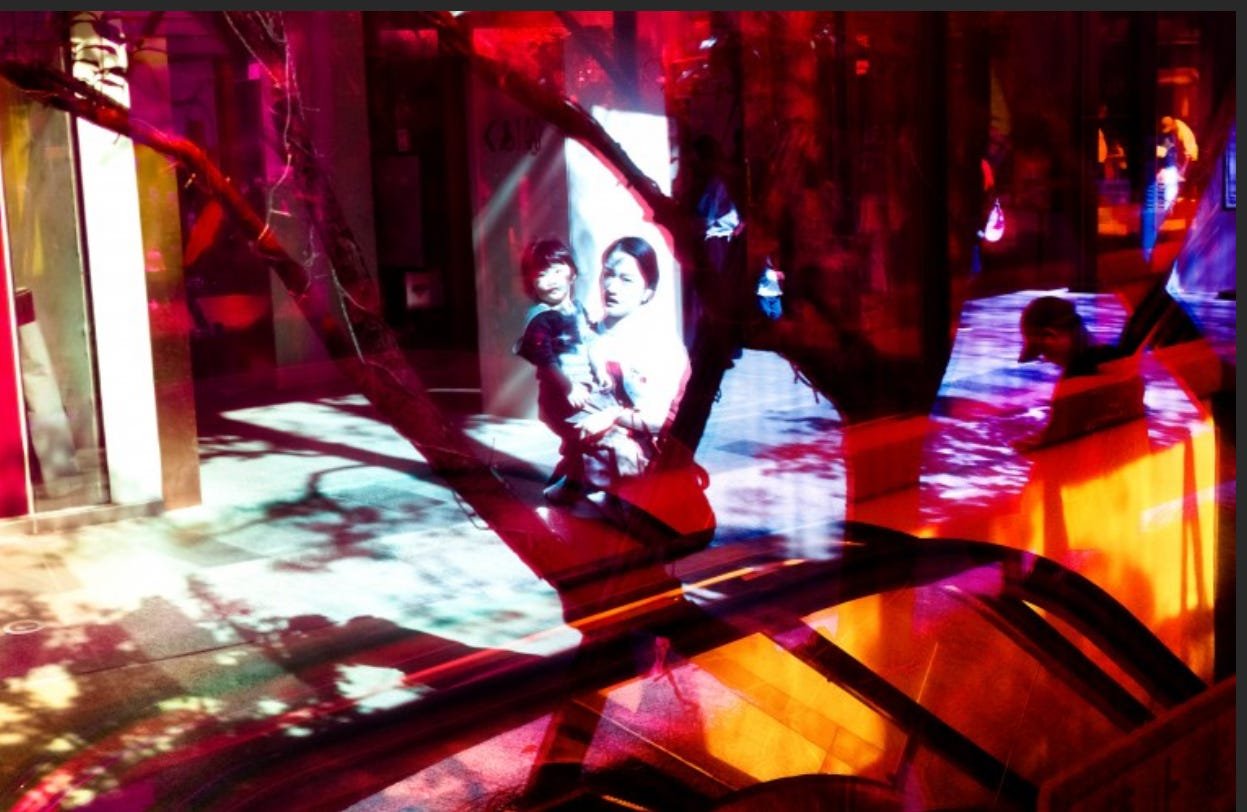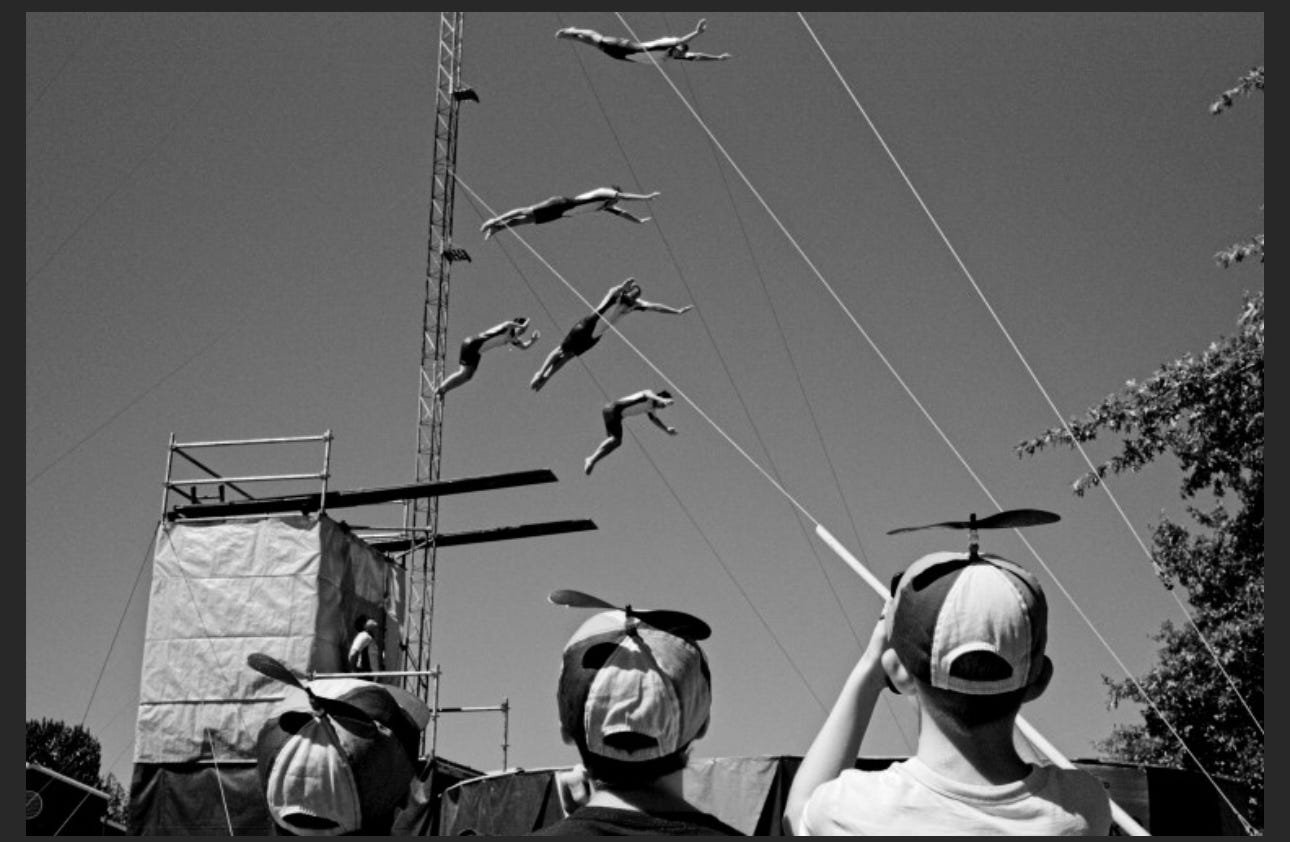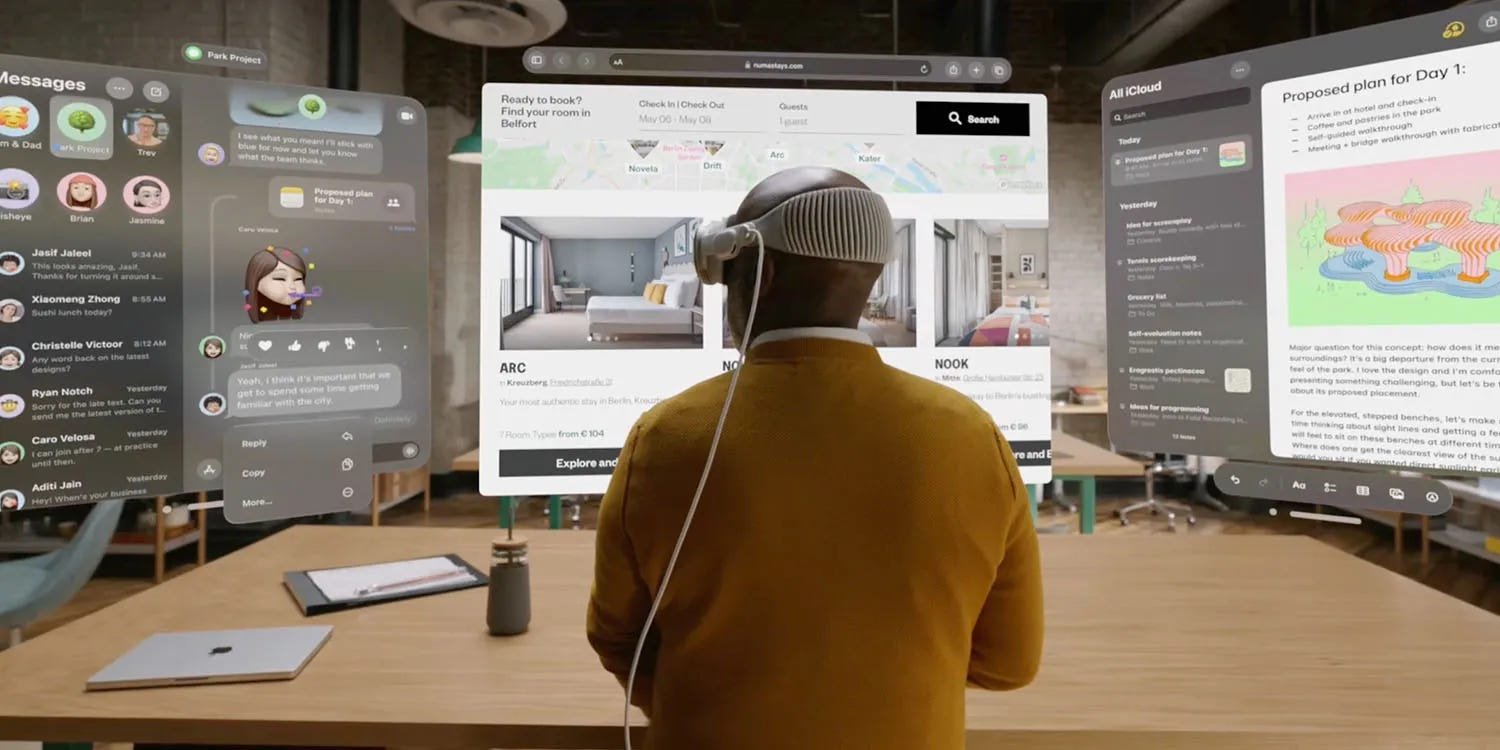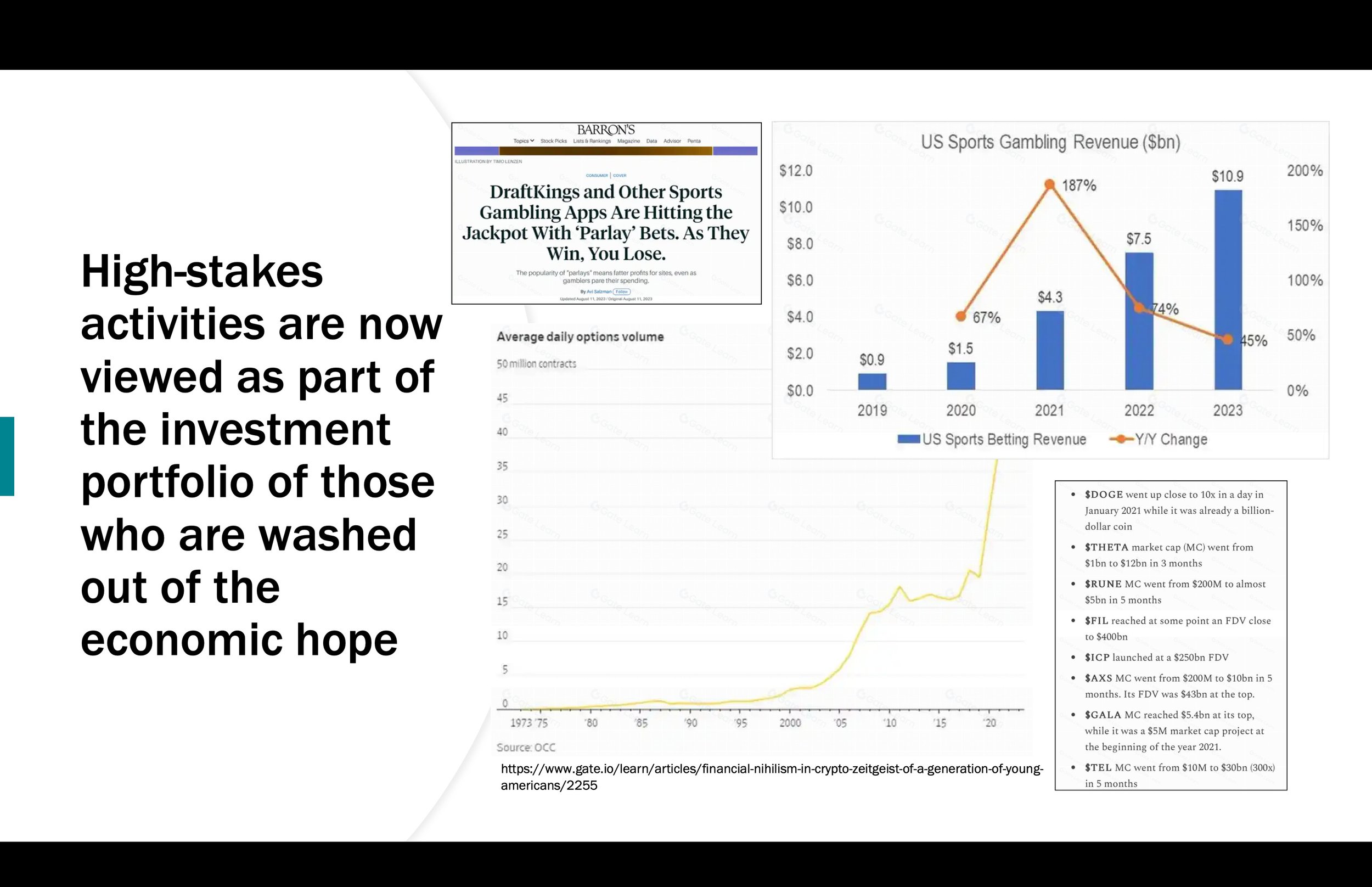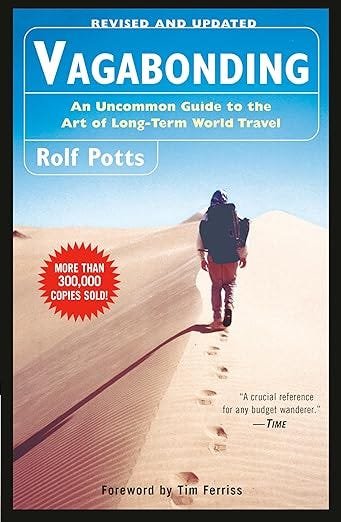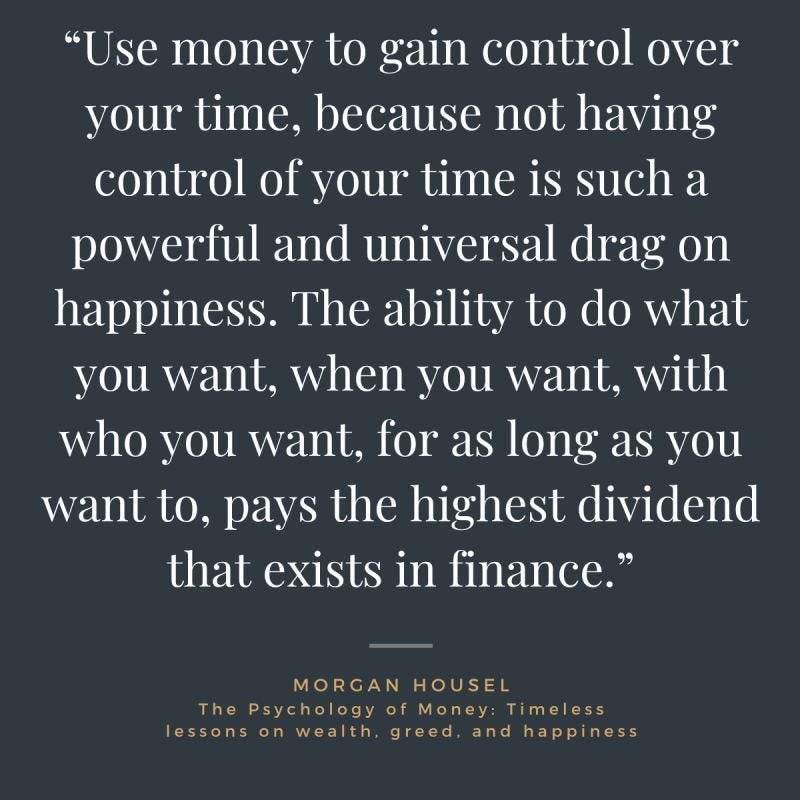The 3 Relevances.
Photography by Felicia Perretti
Change sucks.
But irrelevance is even worse.
Today most firms, institutions and individuals are grappling with 3 levels of relevance.
Does my firm have a relevant business model for the future?
Does my company have the relevant organizational structure, talent mix and suppliers/partners to succeed tomorrow? 3.
Do we as leaders and practitioners have relevant skills and expertise to navigate the transformed world ?
Photography by Felicia Perretti
Relevant business models.
A case can be made that every company needs to interrogate its business model given the changes in technology, demographics and mindsets.
When a company finds itself in trouble it tends to be for two reasons:
Culture: A cultural breakdown due to some combination of a toxic environment, outmoded incentive models or inappropriate leadership. ( Boeing today, Wells-Fargo some time ago).
Competition: An existential crisis driven by a new different economic or distribution model that usually emerges from outside its category definition or usual competitors. ( Tesla and Uber challenges to established auto-makers, linear networks challenged by streaming.)
This culture and competitive soup is now being stirred robustly by AI, Block-chain and XR.
Today AI is driving the cost of knowledge to zero and changing the economics of everything from protein folding to content creation. It is also enabling individuals and small companies to gain scale and capabilities for a few hundred dollars a month that match those of many large companies in an increasing number of areas.
At the same time Blockchain is both creating new ledgers of trust but also allowing creators to own and watermark their work in a world where large tech companies have taken most of the profits and modern AI models are training on their IP.
Upcoming breakthroughs in XR ( Augmented Reality, Virtual Reality, and Spatial Computing) will change communication, creativity and collaboration dramatically within the next three years or less. ( Apple Vision Pro is a threat to any TV manufacturer once its price declines in a few years.)
Smart companies and leaders are re-thinking their business model in various ways including:
a) Blank Sheet Approaches: Working with their internal teams and partners and consultants to re-imagine their business if they were starting today. If they were to begin our company today to satisfy the needs of their customers how would they do it?
b) Attack Mode: If they were to bring their company to its knees as a next age competitor with no legacy constraints but just legal and scientific constraints what would they do?
World class talent and companies never get defeated. They defeat themselves by placing constraints that only exist in their mind or culture or current business models.
Photography by Felicia Perretti
Relevant structures and systems.
The future does not fit in the containers of the past.
Most incentive plans are often optimized to deliver today rather than ensure tomorrow.
In a high velocity and fluid world, partnering and openness rather than control and closed systems are likely to thrive.
Three approaches are often used to re-think structures and systems:
a) Multiple Models: World class companies and leaders run schizophrenic models that have teams focussed on today as well as having teams focussed on tomorrow. These teams often with completely different structures, incentive plans and timelines. While major talent is focussed on today, quite a few world class players in the company are allocated to tomorrow and incentivized to deliver tomorrow’s vs legacy metrics.
b) New Incentive Systems: Firms that have incentives, talent and power structures focused primarily on current delivery while claiming to be future forward should not be taken seriously. Incentive plans, talent allocation and organizational structure drive tomorrow and not strategy decks, flurries of press releases or the announcement of future 20xx task forces.
c) Wider Eco-systems: The best leaders have also begun to re-design the eco-system and architectures of their companies. Many have started to partner aggressively to quickly scale talent while ensuring flexibility looking across wider horizons to ensure both relevance and access to technology. (Microsoft has embraced Linux, partnered with Open AI and long ago dropped the Windows operating division.)
Photography by Felicia Perretti
Are we still relevant?
Companies do not transform people do.
A company remains relevant if its people and leaders remain relevant.
Today anyone who began work less than five years ago needs to find a way to both learn new capabilities but also unlearn some old habits.
This is particularly true for senior leaders with many decades of experience.
The way it was is not the way it is and definitely not the way it will be.
Change is coming much faster than we can hope to retire.
These changes are not just technological, but need to incorporate new mindsets of talent, different economic models and an expectation for leaders and companies to deal with political and social agendas whether they wish to or not.
The key to remaining relevant in the future is to upgrading our mental operating systems.
Leaders everywhere are embracing the new way through a combination of experimenting and using modern technology, hiring coaches, being reverse mentored, partnering with academia and schools and connecting with other leaders to share best practices on learning.
The best companies are also re-allocating dollars to training and learning and mandating up-skilling.
Twisting ourselves into new shapes takes time and practice and can hurt.
It is like going to the gym. Initially difficult and painful.
Some keys to remaining relevant followed by world class talent and leaders.
a) Learning: Leaders today allocate 5 to 10 hours a week to learn and they allocate at least a fifth of their time to think about and re-imagine their firms for tomorrow. If leaders only spend their time on today they realize that their company will not be taken to tomorrow. It is no longer enough to be up to date. One must ensure our teams and skills are up to tomorrow.
b) Monitoring:Leaders watch where top talent from schools are going or where VC and PE money is being driven.
c) Stepping out of comfort zones and category definitions: Tomorrow has already happened elsewhere.
“The future is already here- its just not very evenly distributed” William Gibson
Too many people go to the same industry conferences which are often nothing but incestious gatherings that generate still-born ideas. Best to leave the rote and familiar that feels like Ground Hog day and go to conferences or events of other industries or in other countries.
Regardless of what each of us do we need to address the 3 relevances regarding the future since our firms, our teams, and ourselves are going to spend the rest of our lives there…
Being Better
Peuple basque, Bilbao. Pierre de Vallombreuse,
Often we are told that to succeed one has to be “hard core”.
To be “tough as nails” and be “messianic in mission”.
To strut and take a stance that projects “dominant presence.”
To show no weakness and to “go for the kill”
While sometimes these approaches may work there may be a better way.
To be generous. To be kind. To treat people with dignity.
Reflection. Jhu Ziabin.
Generosity as Strategy.
If strategy is future competitive advantage, generosity is smart for individual or company strategies.
Generosity builds good will which is both an asset and a moat.
It is an asset in that it can be tapped in the future.
It is a moat because when an individual or a company has been generous in times of trouble their employee or customer are less likely to switch to a different firm for a lower price or higher pay.
Generosity is also a key differentiator in that usually when a person or firm needs help there are few people willing to help someone out of power or in trouble. Those individuals and brands who do help stand out and their showing up and helping when others are not burns into the emotional and mental memory of the recipient.
Emotional connections are harder to sever or replace than financial connections.
A story shared with me:
“Long ago, must be 30 years ago or more, I went into Tiffany’s to purchase one cufflink.
The night before I had attended a black-tie event and one cufflink must have worked itself free (it was the solid type, and was difficult to get on and off), and I lost it off my sleeve. Just wasn't there when I got home.
I said to the counter person that I just wanted to buy one cufflink to match the other one.
She left.
She returned with the typical Tiffany's blue box with the white ribbon. "Here you go...no charge," she said.
I couldn't believe it.
You must be -- at least -- the 400th person I have told this story to.”
Brands today cannot succeed unless their employees are happy. It is the employees who after all provide the service to customers and clients. It is the employees who generate the ideas and solve the problems. It is often the employees who are most believed and can be the greatest ambassadors and advocates of a brand. Often employees are far more authentic ambassadors than a celebrity that companies give tens of millions too. Why not be generous in care, money, and attention to employees?
Paper-cut Silhouette. Xinfeng Hu.
Kindness is Key.
One of the keys to a good life and possibly success at work is kindness.
This includes not just being kind to other people but kind to oneself.
Often we spend our time regretting, self-flagellating, doubting our decisions and wondering if we can ever measure up especially in a world filled with standards and measures that are unattainable.
In today’s competitive marketplace of rapidly transforming landscapes and constant benchmarking we often forget that we are dealing not just with buyers, sellers, users, members, competitors, analysts, scientists, management and employees but with analog, carbon based, feeling filled people.
Humans.
Messy and Moody. Dream filled and desire driven.. Anxiously ambitious. Undulating with uncertainty.
Kindness is a way to connect in a world where connections are key.
But it not easy to model in an Excel spreadsheet, display in a PowerPoint , or be described with any depth by GPT.
The machine will rapidly compute an answer, garland it with perspective, refine and correlate what has been fed into its innards, and then emit an output in a dazzling display of verbosity.
Answers that may awe us.
But rarely move us.
The author George Saunders gave a short and remarkable speech on the importance of kindness which everyone should listen to.
A key theme is “to err in the direction of kindness”
Some key passages of his talk to students
“When young, we’re anxious — understandably — to find out if we’ve got what it takes. Can we succeed? Can we build a viable life for ourselves? But you — in particular you, of this generation — may have noticed a certain cyclical quality to ambition. You do well in high-school, in hopes of getting into a good college, so you can do well in the good college, in the hopes of getting a good job, so you can do well in the good job so you can . . .
And this is actually O.K. If we’re going to become kinder, that process has to include taking ourselves seriously — as doers, as accomplishers, as dreamers. We have to do that, to be our best selves.
Still, accomplishment is unreliable. “Succeeding,” whatever that might mean to you, is hard, and the need to do so constantly renews itself (success is like a mountain that keeps growing ahead of you as you hike it), and there’s the very real danger that “succeeding” will take up your whole life, while the big questions go untended.
Do all the other things, the ambitious things — travel, get rich, get famous, innovate, lead, fall in love, make and lose fortunes, swim naked in wild jungle rivers (after first having it tested for monkey poop) – but as you do, to the extent that you can, err in the direction of kindness.”
Later George was interviewed on this talk which went viral after it was posted in the New York Times on why kindness was important and here is what he said:
“Ninety-nine percent of the time if you just do your best to be kind, you’re better off. It’s the basic things, like trying to have good manners, keeping your assumptions about the other person a little open, being willing to revise your opinion.
NW Washington State Fair. Ryder Collins.
Dignity Matters.
Dignity is the right of a person to be valued and respected for their own sake, and to be treated ethically. It is of significance in morality, ethics, law and politics as an extension of the Enlightenment-era concepts of inherent, inalienable rights. The term may also be used to describe personal conduct, as in "behaving with dignity" (Wikipedia)
Marcel Proust wrote that it is “not to visit strange lands, but to possess other eyes that is the only true voyage”.
In Dignity: Seeking Respect in Back Row America, a book combining essay and photographs, Chris Arande reminds Front Row America “that we have removed ourselves physically and in spirit from much of the country and when we look back, we do it through papers and books filled with data.”
He goes on to note that “we have implemented policies that focus narrowly on one value of meaning which is the material. We emphasize GDP and efficiency, those things that we can measure, leaving behind those that are harder to quantify-like community, happiness, friendship, pride, and integration.
And if economics and material goods are the primary form of valuation then education is the way out implying that those who do not make it are dumb, lazy, and stupid.” And education is harder to get , more expensive and the elite schools a luxury good that resemble “Hermes” bags.
He warns that “this has ensured that all those at the bottom, educationally and economically-black, white, gay, straight, men and women feel excluded, rejected and most of all humiliated”
We have denied many their dignity, leaving a vacuum easily filled by drugs, anger, and resentment.
Try generosity, kindness and dignity.
It is not easy.
But it may be the way to being better.
Squeezing Time.
The Persistence of Memory by Salvador Dali.
This post was inspired by a conversation with and informed by content provided by Chris Outram, EVP, Head of Blockchain for Publicis Groupe Media ,who provides ongoing coaching and homework to keep me updated on Web 3 which Publicis defines as a constellation of AI, Blockchain, and XR (AR/VR/Spatial Compute).
1. Squeezing more into time.
Is time squeezing us or are we squeezing time?
Everything seems and feels faster and paying attention or slowing down makes us a) wonder whether we will fall behind, b) fear we are missing out (FOMO), or c) we find things too slow, non-stimulative and boring.
We want it faster. Sooner. Quicker. More. Multi!
Across many fields we find ourselves addicted to an increased metronome of living:
The Rise of Dopamine Culture by Ted Gioia
2. Squeezing Screens into the same Time.
For the past few weeks I have been using Apple’s Vision Pro which in addition to being the best video and image content consumption device ever invented ( yes it is very expensive too) which also has pulled off a break-through in human and computer interface.
It has also enabled a multi-screen sensory experience where one can be writing a presentation, scrolling a social feed, watching a stock ticker, enjoying a movie and much more without the need for multiple screens or a lot of space.
It takes multi-tasking to another level and it can be done anywhere!
As the technology improves, the weight is diminished and the price reduced one can imagine that in less than three years this may be a large part of our future.
3. Squeezed by being born at the wrong time.
In the first chapter of my forthcoming book “Rethinking Work” I reveal many generational shifts and demographic trends that will alter the future of work. It was in this context that I learned about “Financial Nihilism” as Gen-Z and Millennials have a starkly different outlook to capitalism, companies and the way world works .
Many of them believing that the odds are stacked against them.
From Financial Nihilism by Travis Kling
“Demetri Kofinas, the host of the Hidden Forces podcast coined the term “financial nihilism” – the idea that cost of living is strangling most Americans; that upward mobility opportunity is out of reach for increasingly more people; that the American Dream is mostly a thing of the past; and that median home prices divided by median income is at a completely untenable level.
Financial Nihilism goes hand in hand with Populism – a political approach that strives to appeal to ordinary people who feel that their concerns are disregarded by established elite groups.”
Here is a chart that shows how difficult it is to buy a home:
Source: longtermtrends.net. As of October 2023.
“You can see Boomers (and GenX) bought all the houses at about 4.5x annual income. Then subprime lending fueled the housing bubble and the bubble collapsed. Not long thereafter, Millennials entered the workforce and got to the point where they could start buying houses at ~5.5x annual income. Then Covid happened, the Fed printed $6 trillion, and now houses are 7.5x annual income, much higher than even the peak of the housing bubble. Simply out of reach for many millions of Americans under 40. The numbers just don’t add up.”
4. Squeezing returns in a faster time frame through massive risk.
While the equity markets have done well over time they are very expensive when compared to median income.
Below is the ratio of Median Household Income to the S&P 500. It calculates how many shares of the SPX index fund can one buy with a year’s worth of median income.
Source: FRED. As of Q3-23.
Back in the early 60’s you could get 94 shares of the SPX with the median household income. That peaked in the crash of 1982 at 219 shares and then structurally collapsed. The stock market is getting less and less affordable for the average American.
So what does one do?
Gamble and find ways to get massive returns in short time since the other options appear to be too slow, too expensive or too closed.
On sports. On meme stocks. On One Day Expiry Options.
Or how about meme coins like catwifhat
People who bought 1 million catwifhat meme coins on Feb 24 would pay a little less than 17 cents which if they had sold a week later on March 1 would have got $5.69 or a 33X (3300) percent return.
3300 percent in a week is mind blowing but is it really?
Lets look at recent price action on some of these coins below.
Yes, Mfer coin has gone up 1 million percent in the past 24 hours, 19.16 percent in the past hour and up 5.46 percent in the past five minutes. But if you had bought Fat Cat 6 hours ago you would be down 47.76 percent but if you had bought it five minutes ago you would be up 10.35 percent.
Hard to get excited about 10 percent return in a quarter for S&P 500 right?
Even though this stuff below will wipe most people out!
5. Short squeezing time?
This meme stuff is irrational one might say.
So lets look at the financials of a stock that is valued at 9 billion dollars and began trading this week.
Yes, you are reading this chart correctly. DJT stock is valued at 9 billion dollars and has revenue of 3.6 million dollars in nine months with a loss of 50 million.
It is selling for 2512 times its revenue compared to Meta at 9.3 times revenue and Reddit which at 11.7 times revenue.
One has an urge to short it.
But one could end up with nothing but ones shorts since shorting this will be taking on a movement and not a financial instrument.
We are not just living in “interesting times”.
We are squeezing time…
On Stuff.
Visual by Gemini Advanced
A colleague and friend recently asked a question:
Do we own stuff or does stuff own us?
His family was in the midst of a career driven move and a lot of the discussion had to do with stuff.
Does one sell or rent or keep a home empty.
If one sells it or rents it what to do with all the stuff inside. And the cars and …
This is a very Western and particularly American issue given that in many parts with hundreds of millions lacking basic necessities but a widespread issue.
The average American household contains 300,000 items; the U.S. has only 3.1% of the world’s children but 40% of the world’s toys; and Americans spend $1.2 trillion annually on non-essential items — ie, items they don’t need.
According to the Organizer Chicks Blog:
“In 1960, the average family had 2.4 children, and the average home was around 1,100 square feet. By 2010, the average American family had only 0.9 children and 2,300 square feet. So, as a country, we have fewer people living in more square feet than ever before.”
There is a famous law called “Parkinsons Law” which states that the duration of tasks expand to fill their allotted time spans, regardless of the amount of work to be done.
Work expands to fit time available.
The same thing has happened with space. According to the National Association of Productivity and Organizing, 75% of American households can’t park even 1 car in their two-car garage.
This has made self-storage a huge industry in the US with 39 billion dollars of revenue and it is enjoying exploding growth:
In 2022 there were more self-storage facilities (52,786) than the combined locations of some of the largest restaurant chains in the United States. (This suggests a new chain should open with self-serve facilities in every storage facility and we may have the next McDonalds or Starbucks created in a hurry).
Unfortunately there is little co-relation between stuff and happiness. In fact there appears to be a negative co-relation as people a) compare their stuff with other peoples stuff, b) are tied down by their stuff..almost a legacy cost that keeps them rooted, c) have to pay a lot in increased rent or mortgage to house their stuff and d) apparently spend 17 minutes a day finding what they want among the stuff they have.
Thus the popularity of Marie Kondo and their ilk.
The irony is now we are surrounded by too much Marie Kondo and she also sells stuff!
Merchandise or “Merch” is the currency of the social media age.
Another Philosophy.
One of my favorite books is called Vagabonding and one of my most popular posts was on the philosophy of Vagabonding.
Vagabonding is an outlook on life.
Vagabonding is about using the prosperity and possibility of the information age to increase your personal options instead of your personal possessions.
Vagabonding is not a lifestyle, nor is it a trend. It’s an uncommon way of looking at life-a value adjustment from which action naturally follows. And as much as anything, vagabonding is about time-our only real commodity-and how we choose to use it.
Among the best if not the single best book on wealth is Morgan Housel’s “Psychology of Wealth”. If you have not read it you are truly missing out on a combination of wealth and life wisdom written with such a fusion of intelligence, insight, illumination and inspiration that you are unlikely to look at money, finance and wealth in the same way ever again.
There are many many lessons and practical applications in the book but a key underlying message is simply one word.
Enough.
Here is one story:
“At a party given by a billionaire on Shelter Island, Kurt Vonnegut informs his pal, Joseph Heller, that their host, a hedge fund manager, had made more money in a single day than Heller had earned from his wildly popular novel Catch-22 over its whole history. Heller responds, “Yes, but I have something he will never have … enough.” Enough. I was stunned by the simple eloquence of that word—stunned for two reasons: first, because I have been given so much in my own life and, second, because Joseph Heller couldn’t have been more accurate. For a critical element of our society, including many of the wealthiest and most powerful among us, there seems to be no limit today on what enough entails.”
― Morgan Housel, The Psychology of Money
Keys to Success: The 3 Dualities.
Painting by Rene Magritte
Successful leaders, teams and companies that endure over the long run seek to find ways to balance, unite and integrate opposing dualities into a harmonic and flexible approach that leverage opposing tendencies without merging or averaging them.
Here are three key dualities we should all become masters of managing whether it be personally or for our organizations.
Roots and Wings.
Story and Spreadsheet.
Centralized Control and Edge Power.
Painting by Rene Magritte
Roots and Wings
Between 1962’s Lawrence of Arabia and 2020’s The Mandalorian there is much in common including each being an innovative use of a new film technology. It was 70 MM wide screen for Lawrence of Arabia and high-definition streaming for The Mandalorian which brought Disney into the future.
But in world view they are completely different.
In Mandalorian we sense a force and a code best captured in the line “This is the way” repeated throughout the series. There is a code of conduct almost religious. A way of doing things handed down over time. A deterministic march forward.
In Lawrence of Arabia a key theme is of old ways and traditions being challenged best captured by the line “Nothing is written”. The desert is empty, and the sands are wiped clean with the winds of change. The past is not an anchor, and one must write, sculpt, and invent the future.
Most individuals and firms must balance both the roots (history, legacy, anchored costs, reputation, provenance, rule of law and expectations) of “this is the way” with the wings (leaps of faith, casting of on a new journey, challenging the status quo) of “nothing is written”.
We must balance roots and wings.
Roots provide stability, a place to stand, a passed along tradition and a sense of history.
But roots alone which are important to ensure one does not get blown away by the winds of change might anchor one too much to the past and to a status quo which may no longer be relevant.
Thus, the importance of wings.
The ability to raise oneself and see above the horizon, to look down with new perspectives and to ensure that the roots which feed us do not wither by failing to adapt to a new world.
Roots nourish via what we were and where we came from and what we did.
Wings encourage us to go where we need to and to blaze new trails which will lay down tomorrows roots and are a highway to what we will accomplish.
If every individual and company is a story with a place we came from, every individual and a firm is also about a place we are going to.
We all integrate the dualities of roots and wings.
Too rooted and we may wither way as changing times and climate bring drought to the place and way we were.
Too winged and we may be blown away in the gusts of change.
Too rooted and we may be seen as old school, hide bound to tradition and inflexible.
Too ready to fly with change may find us painted as unreliable, undisciplined, and short-term oriented.
Transformation is twisting ourselves and companies into new shapes with the clay of what we were and new skills and pieces we acquire.
Painting by Rene Magritte
Story and Spreadsheet.
Today we live in a data driven, silicon based, algorithmic powered world.
As we all fixate on forging things with the scalability, math and plumbing of data, a case may be made that true wealth and joy are being sculpted with the specialness, magic, and poetry of creativity.
A story is “data with a soul” and “we tell ourselves stories in order to live”
Humans seek the magical, choosing with our hearts and then using numbers to justify what we just did.
If humans made ROI decisions, we would not have children since on a financial and other numerical criteria they do not compute.
Disney has the “Magic Kingdom” and not the “Algorithmic Kingdom” and Disney+ invests in data and technological capital to ensure competitiveness but they differentiate using creative and intellectual capital.
Netflix stock price fluctuates on its ability to attract new subscribers which is directly co-related with its ability to launch new creative endeavors and its true difference today versus other competitors is not necessarily just it’s celebrated data but it’s ability to harness global creative talent versus most competitors who focus on creative national talent. Eg. Squid Games.
Until Novo Nordisk (maker of Ozempic and Wegovy) the most valuable company in Europe was LMVH (now number 2) the owner of Louis Vuitton and Tiffany and the most valuable company in the world was Apple. Both found ways to be spreadsheet operators at the highest level while differentiating on story telling and creativity.
Both companies have amazing supply chains and foundries/technologies, but they differentiate versus competitors and have an ability to charge significant premiums (they manage to get their buyers to forgo data driven decision making that many marketers fixate on) by focusing on provenance, materials, design, innovation, and storytelling.
Wealth and Brands are created through combining story and spreadsheet. Today when a new dawn of creativity and making is being unleashed and data and tech is being commoditized and offered as ingredients and service, we need to make sure we are focusing on our ability to attract, retain, train, re-aggregate and unleash talented creators and makers. And to do so in a flexible way, in fear free innovative cultures that modern technology and the new unbundled distributed workspace of tomorrow are enabling.
Let us stop fixating on the Arrows (how they are made, how many big lakes full of them we have and how cheaply we can buy them) and instead let us focus on the Archers.
Getting the arrows is not too difficult but attracting and motivating the archers is.
Painting by Rene Magritte
Centralized Control and Edge Power.
If one studies the history of any firm you will find it oscillate from being centralized to decentralized every few years.
A firm may begin decentralized but then find some combination of issues with quality control, duplication of costs, complexity or a legal snafu results in a massive centralization drive.
Now centralized the company finds itself ossified and process driven. It is now too slow to move in a rapidly changing world with a one size fits all approach that is rejected by different types of firms that the company is comprised of or a lack of sensitivity to different geographies. The center is too far removed from the day to day reality of business trench warfare and and so the pendulum swings the other way.
Stay in a company for a decade or more and you will go on a round trip ride from one dogma to the the other.
The reality is that successful companies combine both of these tendencies at the same time rather than swinging wildly from one side to another.
There are significant advantages driven by the scale of spending ( combined they give a buyer leverage), quantity of data ( in a world of large language models one needs firm wide access to data) and emerging challenges (responsible AI) which require a centralized approach either at a country, regional or global level calling for a co-ordinated approach as a starting point for legal, data, account/client management and procurement services which are then adapted and tailored for local realities of culture and law.
On the other hand innovation and experimentation occurs on the edge and many accounts and clients are deeply idiosyncratic in the way they do business and expect to be serviced uniquely in customized ways. In these cases the edge drives the interaction and innovation which is then reported back to center who a)create new best practices by identifying patterns across markets and b) modify any central edicts in response to the twitchy signals from the edge.
World class technology that enables information to flow freely and a culture of open communication and collaboration with a focus on excellence are the key factors that allow the combination of center and edge.
If the tech and data enables but the teams are engaged in a civil ware it will not work.
If every body gets along but there is no data and tech sensitivity to calibrate and implement changes in real time will also fail.
The debate of center versus edge is so twentieth century.
It is now combining the duality of center and edge.
Roots and Wings. Story and Spreadsheet. Center and Edge.
Duality wins.







